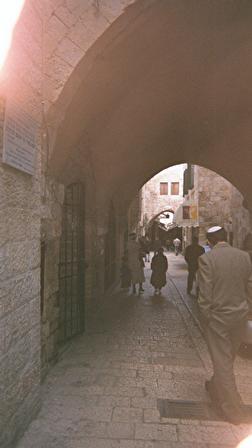
|
Old Jerusalem is a complex of narrow streets, many of them with overhangs that give the street the appearance of being indoors.
|
|
Old Jerusalem: The Bazaar is pretty interesting although it was marred for me by the paucity of marks, er, I mean tourists and the fairly real threat of terrorist activity (I was told not to go there by myself).
|
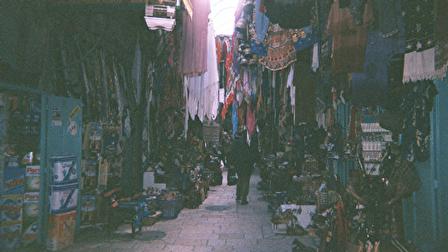
|
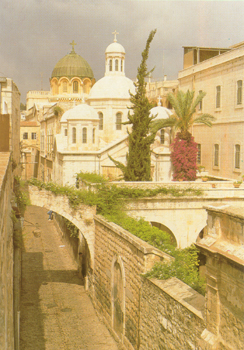
|
Jerusalem - Dome of Ecce Homo
|
|
Jerusalem - St. Stephen Gate
|
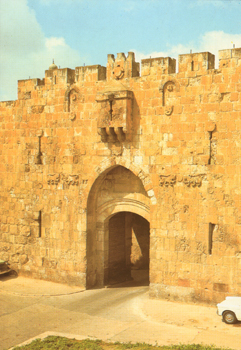
|
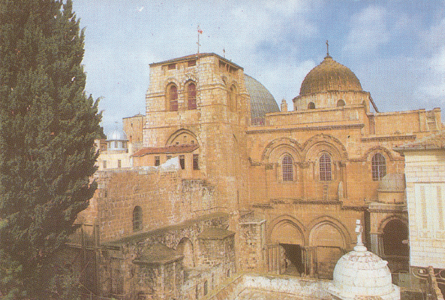
|
Church of the Holy Sepulchre: this is the center of Christian holy sites in Jerusalem. In this church is the place where Christ was crucified, buried and rose from the dead. It is jointly controlled by the Eastern Orthodox and Catholic churches and they have not been cooperating over the last several centuries. In addition to some bad blood in the past, the two churches have very different ideas about appropriate decorations. The Orthodox church likes lots and lots of hanging lights everywhere -- to my eyes something like a chapel in Las Vegas except much, much older. The Catholic Church prefers a much more sedate decor. The result was that this building almost fell down before the two churches cooperated to maintain it.
|
|
My guide told me that we're pretty sure this is where Christ died because Christian pilgrims started handing down detailed descriptions of how to find the site only decades after the event (pretty good, as such things go).
|
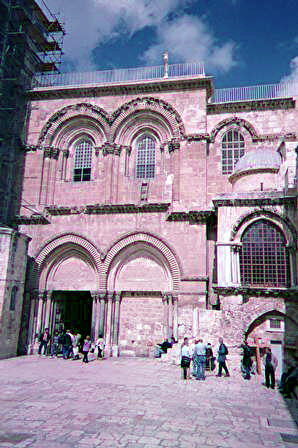
|
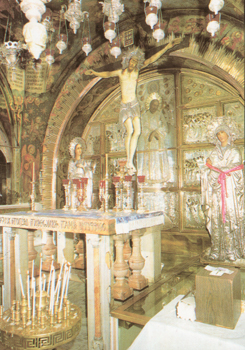
|
Inside the Church of the Holy Sepulchre is the rock known as "Golgotha" on which Jesus Christ was crucified. Here we see an altar that was built on top of that rock. Below the altar is a little hole through which you can see the rock. All the time I was there people shuffled up in a long line, crawled under the altar and kissed the rock.
|
|
The Holy Sepulchre: this is where Jesus was buried. Apparently it started out as a cave in a cliff. Then pilgrims carved away the cliff leaving only a fairly small rock mound with the tomb inside. When the Crusaders saw this, they were appalled; this wasn't their idea of what a saint's mausoleum should look like. So they built this elaborate structure around it. When I visited there were literally hundreds of people waiting in line to go in; I decided I didn't want to spend 2 hours there.
|
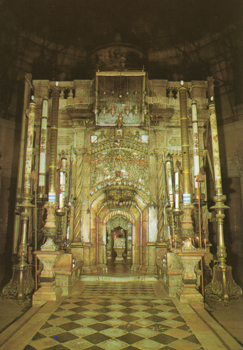
|
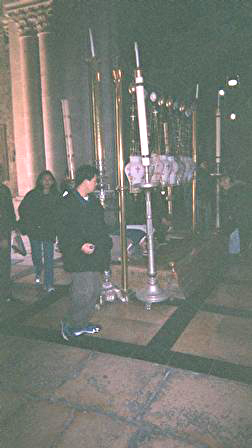
|
In the Church of the Holy Sepulchre there is a flat stone with all these candles and lamps around it. This is, by tradition, the slab on which Christ was laid out by the women. All day long, people come here and kiss the slab.
|
|
The Church of the Holy Sepulchre: This is a glass case around the raw stone at the base of Golgotha (the place where Jesus was crucified). Apparently people kept touching the stone so they put a case around it...
|
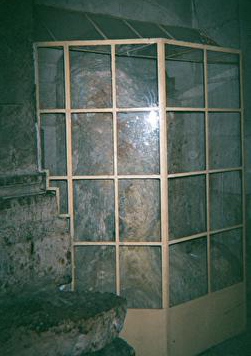
|
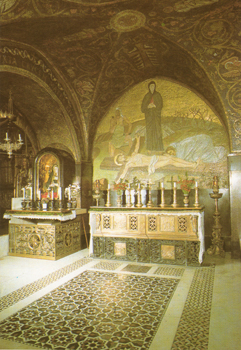
|
Jerusalem - Church of the Holy Sepulchre Calvary
|
|
An ornate doorway at The Church of the Holy Sepulchre. This has no religious significance as far as I know; I just thought Dorita might like to needlepoint itů
|
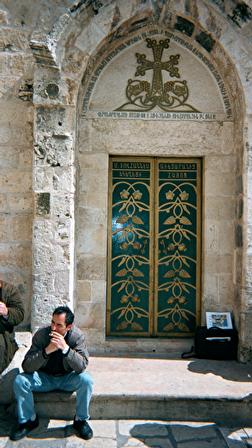
|
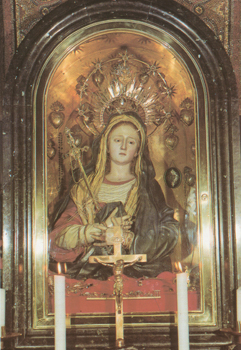
|
Jerusalem - The Calvary (beautiful bust of Mary in room next to Golgotha in Church of the Holy Sepulchre)
|
|
The Via Delorosa is the path that Jesus followed through Jerusalem with the cross on his back. When I was young, we used to do the "stations of the cross" around the church. Here you can do them at the actual sites where they happened.
|
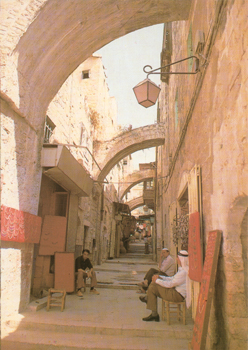
|
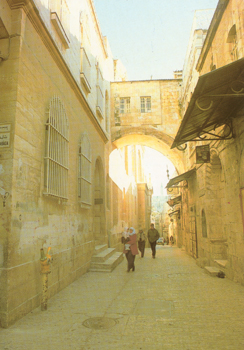
|
Via Delarosa -- these two pictures just look like any other street in Old Jerusalem but they are actually part of the path that Jesus followed. On his way to his death.
|
|
Jerusalem - Domnius Flevit Chapel
|
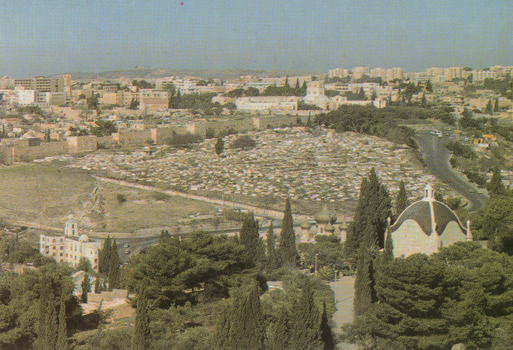
|















